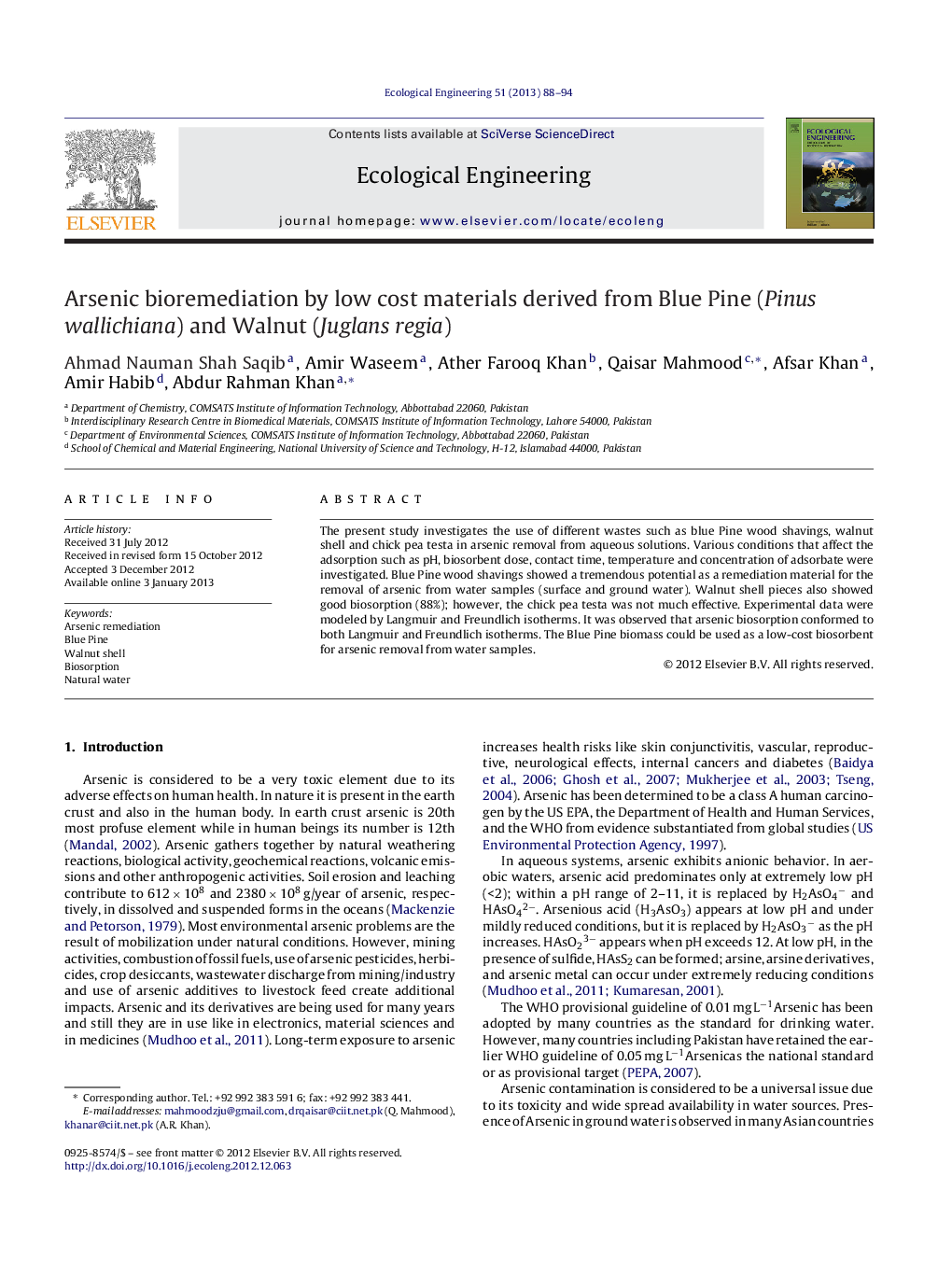| Article ID | Journal | Published Year | Pages | File Type |
|---|---|---|---|---|
| 4389832 | Ecological Engineering | 2013 | 7 Pages |
The present study investigates the use of different wastes such as blue Pine wood shavings, walnut shell and chick pea testa in arsenic removal from aqueous solutions. Various conditions that affect the adsorption such as pH, biosorbent dose, contact time, temperature and concentration of adsorbate were investigated. Blue Pine wood shavings showed a tremendous potential as a remediation material for the removal of arsenic from water samples (surface and ground water). Walnut shell pieces also showed good biosorption (88%); however, the chick pea testa was not much effective. Experimental data were modeled by Langmuir and Freundlich isotherms. It was observed that arsenic biosorption conformed to both Langmuir and Freundlich isotherms. The Blue Pine biomass could be used as a low-cost biosorbent for arsenic removal from water samples.
► The manuscript describes the arsenic removal from water through different biomaterials. ► Biosorbents for metal removal are beneficial for being low cost and widely available. ► Pinus biomass is efficient and cost effective biosorbent for arsenic removal. ► P. wallichiana and Juglans regia have not been reported for arsenic removal studies
